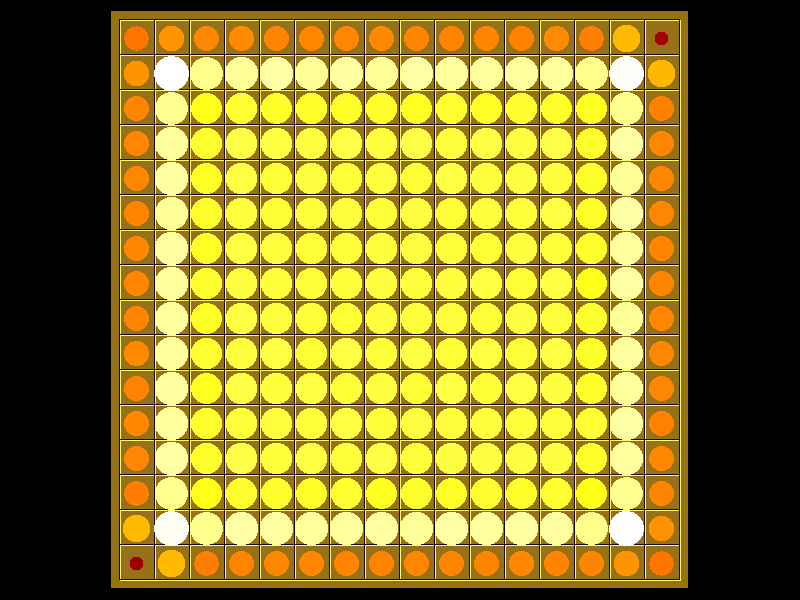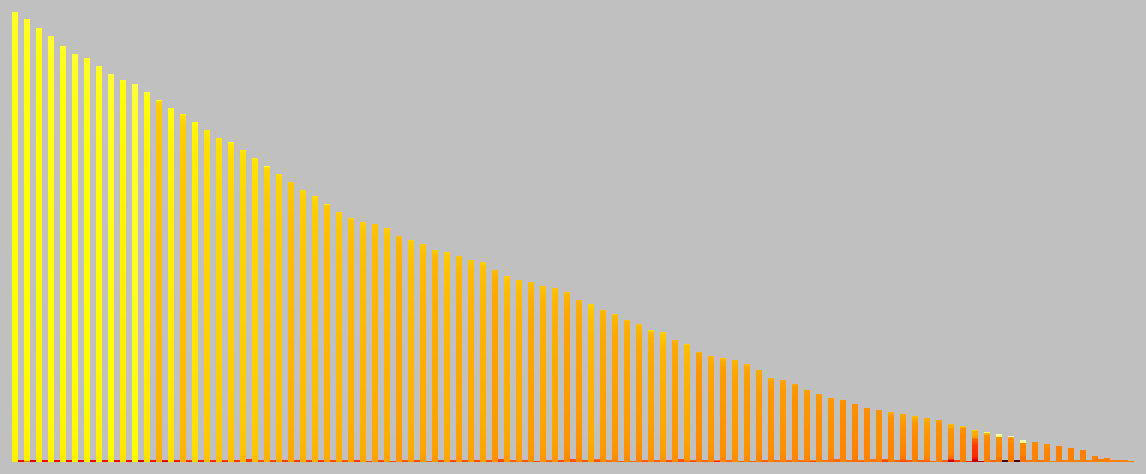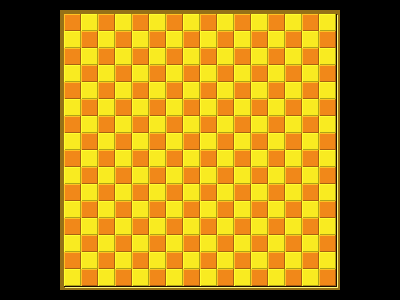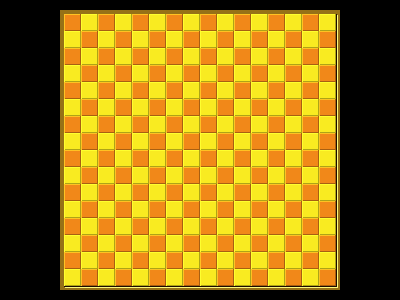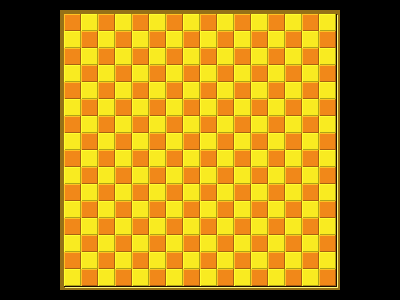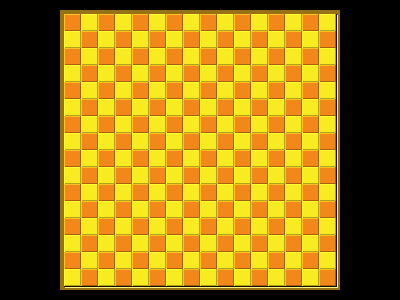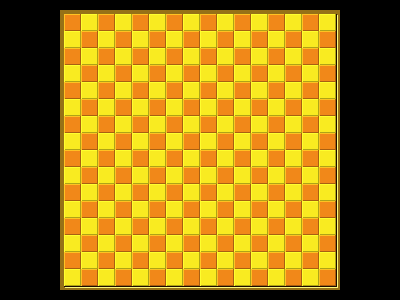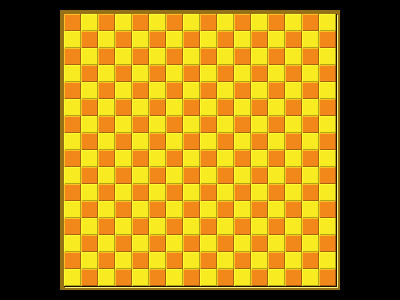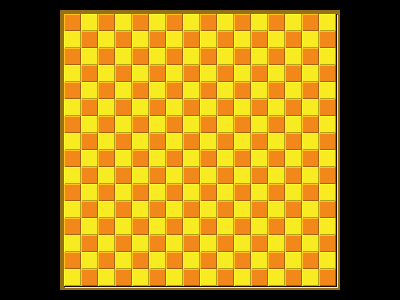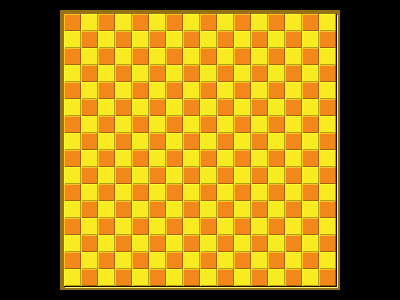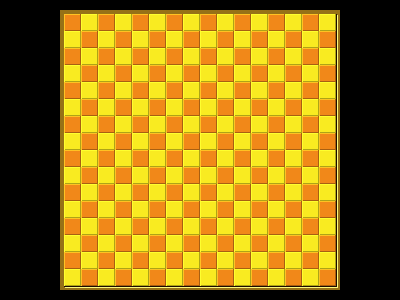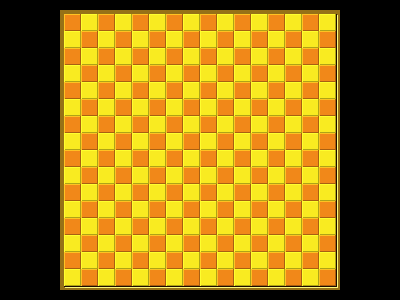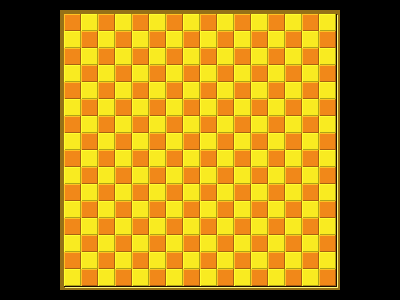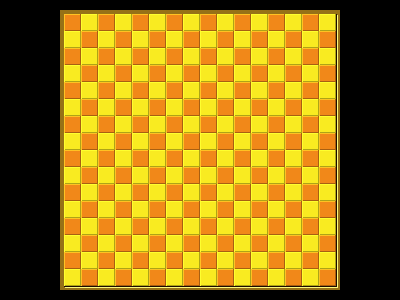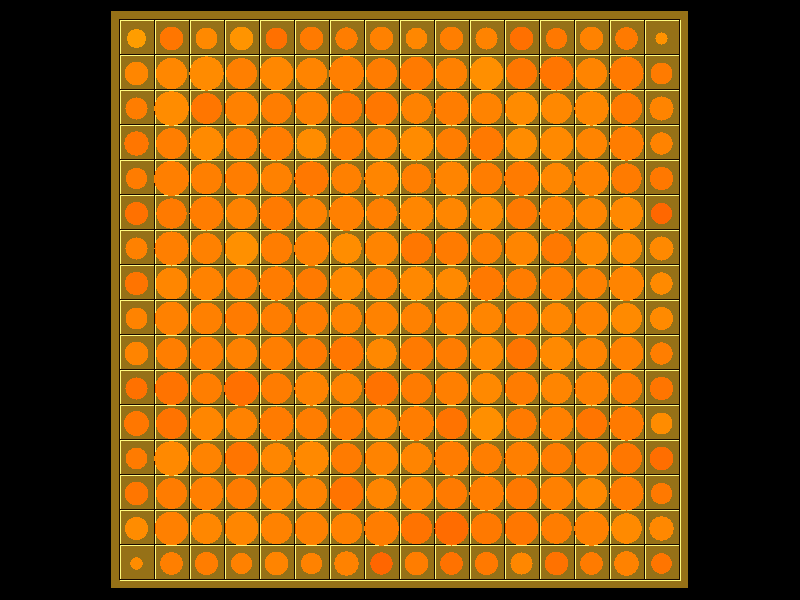Rules
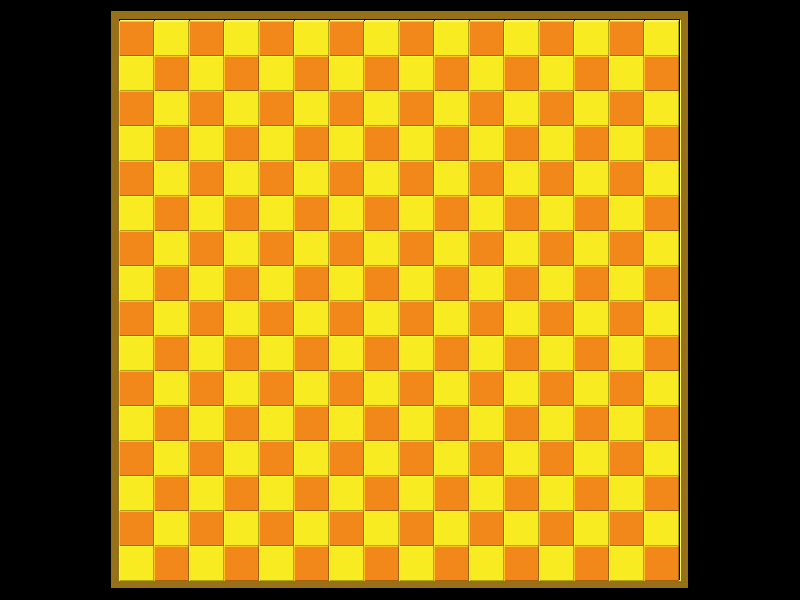
Representative game (in the sense of being of mean length). Wherever you see the 'representative game' referred to in later sections, this is it!
Play
Each turn, take the following steps:
- Twist
- Drag from top left to bottom right to rotate a square clockwise, or from bottom right to top left to rotate anticlockwise.
- Bandage
- Click on a piece in the square you just rotated to bandage it.
Goal
The game ends when there are no more legal moves. The player who controls the biggest group (defined by orthogonal connectivity of like-coloured pawns) is the winner. If the two biggest groups are equal in size, the second-biggest groups are compared, and so on.

